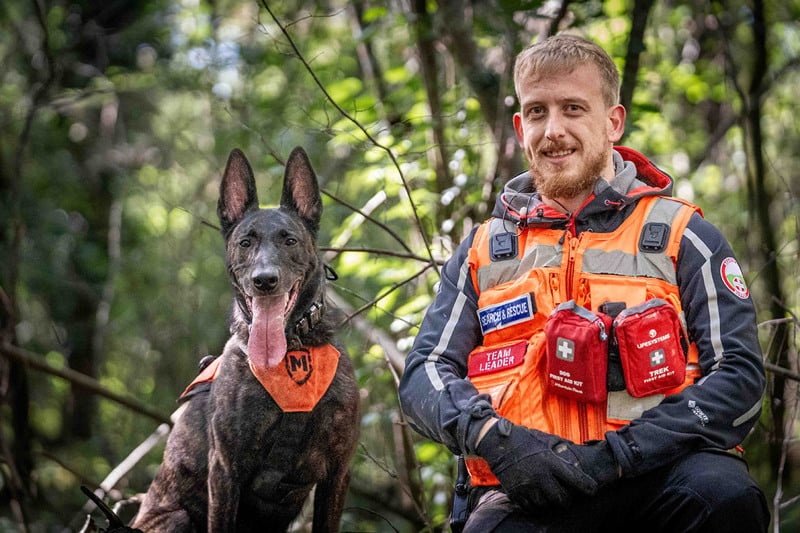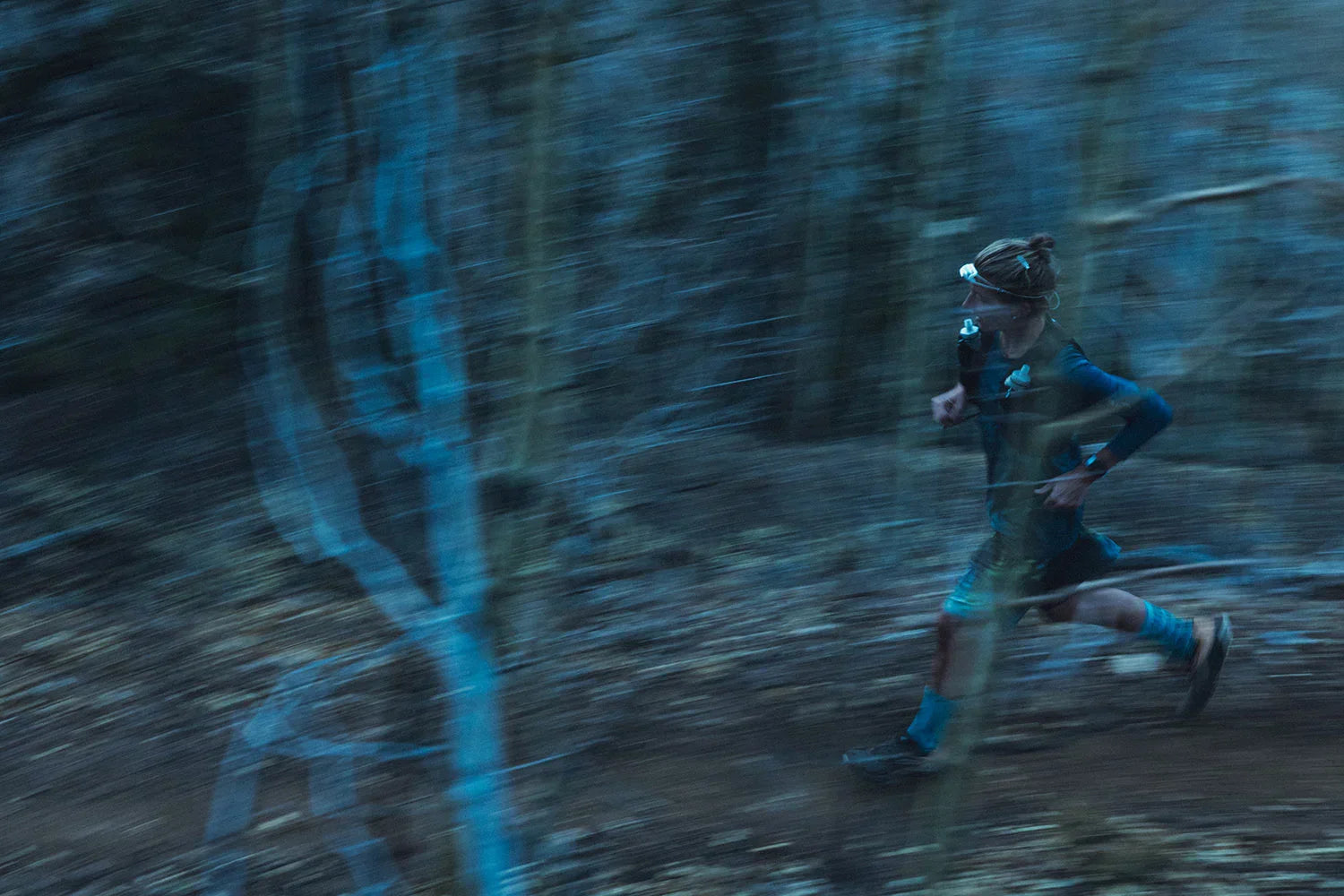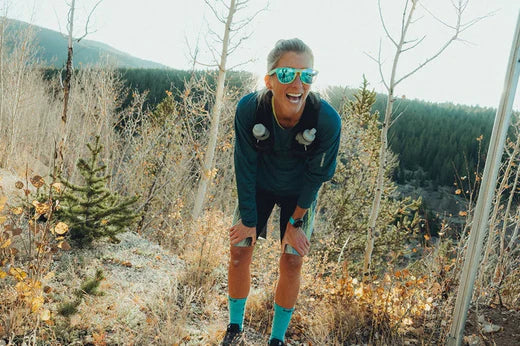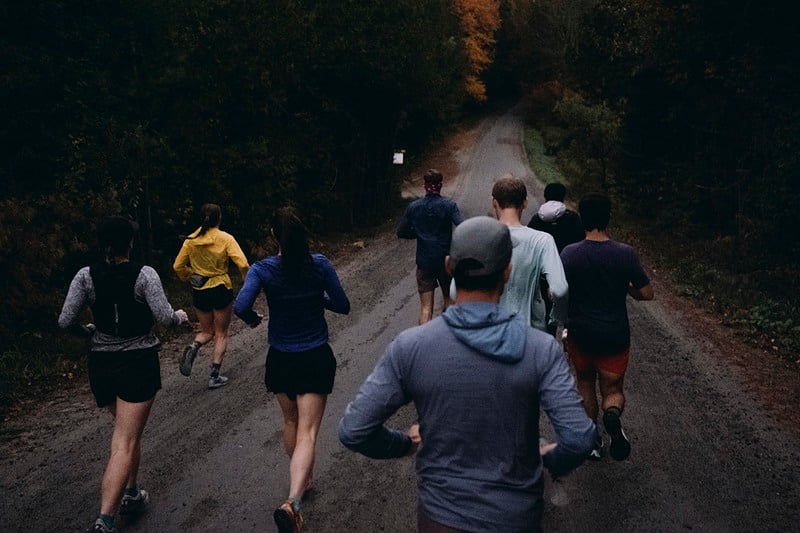

Suunto Blog

How not to get lost: essential tips for outdoor safety
Exploring the outdoors is rewarding, but even experienced adventurers can get disoriented. Here’s expert advice from Lowland Rescue Search Dogs Sussex to help you stay safe.
Venturing into the outdoors comes with a responsibility to yourself and your loved ones. By preparing thoroughly, equipping yourself with the right tools, and following expert advice, you can minimize risks and fully enjoy your time in nature. As the saying goes, it’s far better to be in a cozy pub wishing you were on the mountain than to be on the mountain wishing you were in the pub.
With the following tips in mind, you can explore with confidence and care, knowing that you’ve done everything possible to stay safe. Adventure responsibly and cherish every moment in the wild – the world is waiting to be discovered!
Timeless advice from experts
Lowland Rescue Search Dogs Sussex, a volunteer charity specializing in search and rescue missions, emphasizes that preparation is key to staying safe. Their teams, which include highly trained search dogs, are frequently called upon to locate individuals who have wandered off course. While these canine heroes are incredibly skilled, their handlers often remind us that the best rescue is the one that isn’t needed.
Their advice below aligns with a broader mission to educate outdoor enthusiasts on safety. From mastering navigation skills to understanding weather patterns, taking proactive measures can help prevent accidents and ensure your adventures remain enjoyable.
See the Sussex Search Dogs in action.
Suunto has long been a trusted companion for adventurers. Since the very beginning back in 1936 we have designed tools to help you stay on course, no matter where your journey takes you. In collaboration with organizations like Lowland Rescue Search Dogs Sussex, we want to emphasizes the importance of preparation and awareness in the outdoors.
While the tools are indispensable, the knowledge you carry with you is just as crucial. Combining technology with foundational outdoor skills ensures you’re ready to tackle any challenge that comes your way.
The importance of preparation
Getting lost isn’t just inconvenient – it can be dangerous. Whether you’re hiking through woodland trails, navigating rolling hills, or exploring in the mountains, preparation is your best defense. By taking a few simple steps before heading out, you can significantly reduce the risk of losing your way.
Check the weather: Always review the forecast before your trip. Weather can change quickly, even in lowland areas, so be ready for sudden shifts.
Learn navigation basics: Even if you rely on modern GPS devices, having a solid understanding of map reading and compass use is invaluable. These skills can be life-saving when technology fails.
Pack smart: Bring essential items such as appropriate clothing, a first aid kit, food, water, a whistle, and a flashlight. These basics can make a huge difference in an emergency.
Share your plans: Always inform someone you trust about your intended route and expected return time. This simple step ensures someone will know to raise the alarm if needed. Also share the planed route with the group. This way you all have the same route available in your Suunto GPS watches.
What to do if you get lost
Even with the best preparation, unforeseen situations can happen. As a backup, you can use your Suunto to navigate back to your starting point or to follow the path you have taken so far. Also, if you have mobile connection, you can use Suunto app on your phone to plan a route starting in your current location and sync it to your watch.
If none of that helps and you simply have no idea where you are and where to go, here’s what you should do:
Stay calm and stay put: Panic only makes matters worse. Remaining in one place increases your chances of being found.
Use your phone: If you have a mobile signal, call for help immediately. Provide rescuers with as much information as possible, including landmarks, sounds, or your last known location.
Make yourself visible: Use bright clothing or gear to create signals that rescuers can spot from a distance. If you have a whistle, blow it regularly to attract attention.
Seek shelter: Protect yourself from the elements by finding or creating shelter. This is especially critical in cold, wet, or windy conditions.
Conserve energy: Avoid unnecessary movement, stay hydrated, and keep warm while you wait for help.

Ultra running mantras: Mental fuel for the long haul
Courtney Dauwalter swears by the power of mantras like “Believe” to push through ultra-running challenges. Inspired by her, the ultra community shared their go-to phrases.
Courtney Dauwalter, one of the greatest athletes in ultra running, has long emphasized the importance of mental toughness. Known for her resilience, Courtney breaks races into manageable milestones, using simple yet powerful mantras such as "embrace the pain" and "right foot, left foot" to manage pain, maintain rhythm, and stay focused.
“Believe is a mantra that I use pretty often,” Courtney shares. “If you just repeat it over and over in your head, there’s no room for anything else but to believe that you can keep on going no matter what it looks like.” For her, the "pain cave" is a mental space where growth happens, a place she visualizes as chiseling away at endurance barriers.
Courtney recently asked her Instagram community: What’s your go-to mantra when it gets tough? The response was overwhelming, with thousands of runners sharing their perseverance-boosting phrases.
Common themes from the ultra community
The responses revealed several themes. Many runners focus on self-empowerment and resilience, with mantras like “I can do hard things” and “You got this” encouraging inner strength. Others emphasize breaking challenges into smaller steps with phrases like “One step at a time” or “Just keep swimming.”
Some runners use humor to cope, with playful mantras like “Don’t die!” or the sarcastic “This is dumb... keep going!” These bring levity to grueling moments. Gratitude also emerged as a motivator, with mantras like “Get to do this” reframing hardship as privilege.
Whether it’s Courtney’s “Believe” or the community’s “I can do hard things,” mantras anchor runners through challenges. They transform overwhelming distances into achievable milestones, carrying runners through the pain cave and beyond. Try one on your next run—you might be surprised how far the right words can take you.
These were the most liked comments on Courtney's post on Instagram:
“I got sober, this is a piece of cake.”
"It is how it is". When my son was diagnosed with an incurable brain tumor age 7 this is what kept him going. Now I carry his memory with me on every trail and know: it is how it is.
"Pain is just French for bread."
"I get to do this" ✨️🏃♀️
...but did you die?
Left foot, Right foot, Left foot, Right foot, Left foot, Right Foot. 👣👣👣
"The faster you run, the faster you’re done.”
“Be savage, not average!” My 11 year old came up with it and I love it
I like to quote Dory from Finding Nemo with, “Just keep swimming”
"Just one more" ....mountain, loop, step....Just one more (ps tattooed in my forearm, from the late Gabe Grunewald, "it's OK to struggle, it's not ok to give up"
“”I’m here for the food 🤤🤤🤤🤤””
“This is what you came for”
“How bad do you want it?”
I “get” to do this ❤️
What if?..what if I actually pull this one off...
Check out the limited edition Suunto Race S Titanium Courtney sports watch. When the going gets tough, its glow-in-the-dark strap will remind you: Believe!
Learn more about SUUNTO RACE S TITANIUM COURTNEY

The art of endurance: Courtney Dauwalter's vibrant approach to ultra running
Entering the "pain cave" is familiar territory for ultra and trail runners, where discomfort and exhaustion push you to your limits. How you handle this phase can make or break your race.
Right foot, left foot: Staying driven in the pain cave
Courtney Dauwalter, one of the greatest in the sport of ultra running, excels in this arena with her unmatched mental toughness. She breaks down races into manageable sections, focusing on the next milestone, and uses positive self-talk to stay driven. Phrases like "embrace the pain" and "right foot, left foot" are her go-tos, working like mantras to keep her focused, manage pain, and maintain a steady rhythm.
“Believe is a mantra that I use pretty often,” says Courtney. “If you just repeat it over and over in your head, there’s no room for anything else but to believe that you can keep on going no matter what it looks like.” When she enters the "pain cave," Courtney imagines “grabbing a chisel” and pushing further into that mental space, a place she describes as essential to building resilience.
A bright spirit in the dark moments
What really sets Courtney apart is her infectious joy and vibrant personality. She’s often seen smiling, exuding energy, and decked out in colorful gear, reflecting her passion for the sport. This positive outlook not only helps her find joy in the grueling moments but also uplifts those around her. Embracing the pain while staying happy and colorful is Courtney’s signature approach, turning ultra running into a true celebration of endurance and resilience.
“When the sun sets at an ultra, it feels pretty special,” she shares. “It’s like you’re doing something not everyone else is doing. Sitting on your couch would be easier, but here you are, headed into the mountains in the dark to see what you can find.” And when she makes it to dawn? “Sunrise is this huge jolt of energy—like we made it through the night, and now we get to see the terrain again!”
Colorful, resilient, and ready: The Courtney-approved Suunto
It’s this positive burst of energy that brought Courtney and Suunto’s design team together to collaborate on a watch that reflects her vibrant style and unique approach to ultra running. Inspired by Courtney’s philosophy of embracing challenges with joy and resilience, the new Suunto Race S Titanium Courtney design is more than just a sports watch; it’s a companion designed together with Courtney to empower athletes to conquer their own "pain caves" and honor their resilience.
Courtney made sure the watch matched her ultra-running needs: “When I’m running 100 miles, what kind of friend do I want on my wrist? Something lightweight, easy to read, and colorful enough to give off good vibes!”
Suunto Race S Titanium Courtney:
High-definition AMOLED screen
Battery life 120h (good GPS) / 30h (Best GPS)
The lightest watch (53 g) in the Suunto portfolio
Glow-in-the-dark strap
HRV recovery measurement
Advanced training metrics
95+ sport modes
Free offline maps
Shop Suunto Race S Titanium Courtney here

“Running” The Euchre Bar Massacre
How does bushwhacking 50 miles and 25k feet of elevation gain without a set course sound?
We asked Suunto ambassador Max King who did just that at the Euchre Bar Massacre near Foresthill, California. Read on and Max will explain why it isn't your typical running race!
”I don't usually do races where a finish is a good result, but every so often, I humbly find myself in one of those situations where I'll just be happy to finish...literally.
On October 16th, I found myself in exactly that situation. This was one of those peculiar races where there’s no "elite" field, there's no finishers medals, or t-shirts. It's just you versus the course, and it's going to do its best not to let you cross that finish line.
And I'm not talking about the self-deprecating, ”Oh gee, I hope I finish,” type of mentality when the normal finish rate is well north of 80%. I'm talking about a race where the finish rate is typically lower than 10% and no one in the field is trying for a fast time.
The Euchre Bar Massacre is in a similar vein to the popular Barkley Marathons in Tennessee, where people – not very many of them – wander around the mountains looking for books to rip pages out of and therefore "prove" they have completed the course. And I use "course" loosely; while there is a route that you are supposed to follow, it's unmarked, mostly off-trail, and ultimately, you're not going to follow the same ”course” as everybody else. (See Max’s Instagram post for book pictures!)
Due to the off-trail nature of the Euchre Bar Massacre, there is significant bushwhacking leading to typical finish times over 24hrs. Did I mention it is only a 50 miler?! The length of the course is irrelevant. Distance on a course like this is measured in ”hills”, as in ”it is 3 hills until the drop bags” rather than ”it's only 10mi till the drop bags.” The vertical gain of each hill and difficulty of the bushwhacking determines the time until you can drop from the race...or stubbornly continue on to the next set of hills.
These types of events aren't popular, and it's not because they are difficult. Trail runners do plenty of hard things. They appeal to a small number of folks that are drawn to this type of adventure. I think each participant's reasons may vary but for me, it's the whole combination of elements that really sucks me in. I love the wild nature of this type of race.
It is remote – I raced alone for 20hrs without seeing another person other than about 10 minutes at the drop bags.
It is rugged, obviously – it has 25k of vert, tons of vegetation, and about half is off-trail. I looked like I was stuffed in a burlap bag with 20 cats before I was done.
It is routeless – with no course markings you're going by map and compass and when it gets dark, you better know how to use that compass. I kept telling myself ”trust in the compass” as I was going in a direction that my mind was telling me was completely the wrong direction. I also did a complete 180-degree circle around a patch of manzanita in the middle of the night and realized I'd been there before. That's a terrible feeling.
There's a lot about an event like this that appeals to me and a few nutty others but doesn't appeal to a lot more people out there. And that's okay.
Now, If you're thinking of getting into one of these, here are a few tips:
First, reconsider your decision...
Second, practice navigating, bushwhacking, and being alone for a long time in a safe space.
Third, put ”For The Win”, or ”FTW” on your calendar as there are no winners, just finishers.
Words and images by: Max King
Thank you for this recount, Max! We sure know who to call when we want all pain and no gain!

Running with purpose: Footprints Camp inspires climate action
Trail runner Dakota Jones shares his perspective on the deep connection between trail running and environmental responsibility. In this piece, he explains how his Footprints Running camp empowers runners to create meaningful climate action in their communities.
Article by Dakota Jones
One of the best things about running is that you can do it almost anywhere. As long as you have some shoes and a few clothes, you can go for a run wherever you are. (And hey – you don’t even really need that stuff, depending on the context.) Trail running was born out of this desire to embrace the experience of running and its simplicity. But this pursuit is at risk due to climate change, which is impacting not only our ability to run but the general human ability to continue to use natural resources for life, health, and prosperity. It’s a big bad scary thing and I spent too much time worrying about it and not enough time trying to do something. In 2021, I decided to change that.
I am Dakota Jones, a professional trail runner from Utah who has been running competitively for 15 years. I’ve also been trying to use my platform to address environmental issues for a long time. In 2016 I took a cargo ship across the Atlantic to race in Europe instead of flying. And In 2018, I rode my bike from where I was living in Silverton, Colorado to the Pikes Peak Marathon. Then I ran the race, and the following week I biked home.
Both of these trips were exciting adventures, and on paper they saved resources. But the problem was that neither of them was repeatable on a large scale People with jobs and families simply can’t take the time and money to travel by cargo ship or bicycle. These actions may not be the overall solution to climate change, but they had been effective actions for me personally, because I had a public platform as a professional runner. The question was: how could I help people create their own similar projects that made the best use of their own skills and circumstances?
A space for runners to drive impact
Footprints Running camp came out of that thought process, and out of the many conversations I had with smarter friends over the next few years. The basic ideas can be summed up as follows:
Running helps people be healthy and it brings them together
Running as a sport is a privileged thing to do, which implies you have the time and energy to attend to more than your basic needs
Many runners want to address social and environmental issues but don’t know how
We put these three ideas together and created a running camp that a) brought people together in person, b) centered the messaging of the camp around community service, and c) provided education and mentorship for environmental action. The key was that we don’t just want to raise awareness about problems, we want to create direct actions. And since we’re not all senators or the leaders of large corporations, we shouldn’t be expected to create global changes. Instead, each participant at Footprints arrives with an idea for how they want to address climate change in their community. During the camp, our mentors help campers bring these projects to life.
Transforming ideas into local impact
Abbie Sullivan is from Canandaigua, New York, a small town on a beautiful lake. During the last few years the lake has experienced periodic algae blooms, which is when fertilizer from outlying farms pours into the lake and consumes all the oxygen in the upper waters, making it toxic. Abbie had studied the issue during her engineering degree, but she didn’t know how to bring about action on the issue.
Her mentor was Dr. Ryan McClure, a climate scientist (and ultrarunner) from Colorado. Together they worked to develop a race in Canandaigua that brought the community together around the issue. First they identified an action to take: they partnered with a local nonprofit working on the lake’s water quality. Next, they reached out to local businesses and created a festival to partner the race. The event became an opportunity for people from all over the region to come to Canandaigua for the race and to get to know the community. Local businesses benefitted, and the runners got to race down the town’s main street. In this way, Abbie and Dr. McClure turned an environmental problem into an economic solution: now the town can see the benefit of cleaning up the lake, and they have a clear partner (the race and the local nonprofit) to whom they can turn for help.
Abbie’s project is one of more than two dozen that we have helped develop during the past three years of Footprints camps. If you want to read more, check out our website here. This fall, our fourth camp took place in northern Vermont, and we were proud to expand both our scope of education and our network of partners. During the last year we have adjusted our mission to focus on climate justice rather than simply climate change, with the aim of prioritizing the people most affected by climate change to help reduce the impacts they feel and assist them to be more prepared.
In addition, we’re thrilled to partner with Suunto! Suunto is a watch manufacturer from Finland that has been operating for more than 80 years. They began by making compasses, and now they make state of the art smart watches that allow athletes and adventurers to travel to the most remote parts of the globe without ever being lost. Suunto supports environmental activism within their own brand and externally, by providing funds and products to organizations like Footprints. We’re thrilled to share this new adventure with them and excited to tell the tale.
If you want to get involved with Footprints, take a look at our website and follow along on social media. We’ve found that when people have the support they need, they can do amazing things. As a nonprofit with a large and growing network of mentors and collaborators across many professional fields, we are excited to organize more camps and create more opportunities for people like you. What kind of project would you like to work on at camp? Reach out and tell us now!
Images by Ryan Thrower & Freetrail

Pace your race with Abby, Iris and Dakota
Suunto athletes Iris Pessey, Abby Hall, and Dakota Jones reveal their pacing strategies during the UTMB Mont Blanc in Chamonix.
Race tactics! How should you approach a trail race to get the best possible outcome? How do you pace a race right?
We turned to three of our ambassadors – Abby Hall, Iris Pessey, and Dakota Jones – to get their tips. They each ran different distances at the UTMB Mont Blanc this year: Iris flew through the MCC, Dakota tackled the CCC, and Abby took the UTMB by its horns.
In the video below, Iris, Abby and Dakota share their unique insights on balancing effort, conserving energy, and navigating the mental and physical challenges of ultra-distance racing.
Abby uses her Suunto watch's Climb Guidance to pace climbs and descents evenly, while Dakota, a strong climber, pushes harder on uphills, saying, "Racing is about taking risks." Iris breaks her race into sections, allowing her to mentally reset along the way, finding motivation in in each checkpoint.
Curious about how the pros pace themselves in tough trail races? Watch the video now to gain valuable tips on skill, strategy, and resilience that could make all the difference on your next trail race!





























































